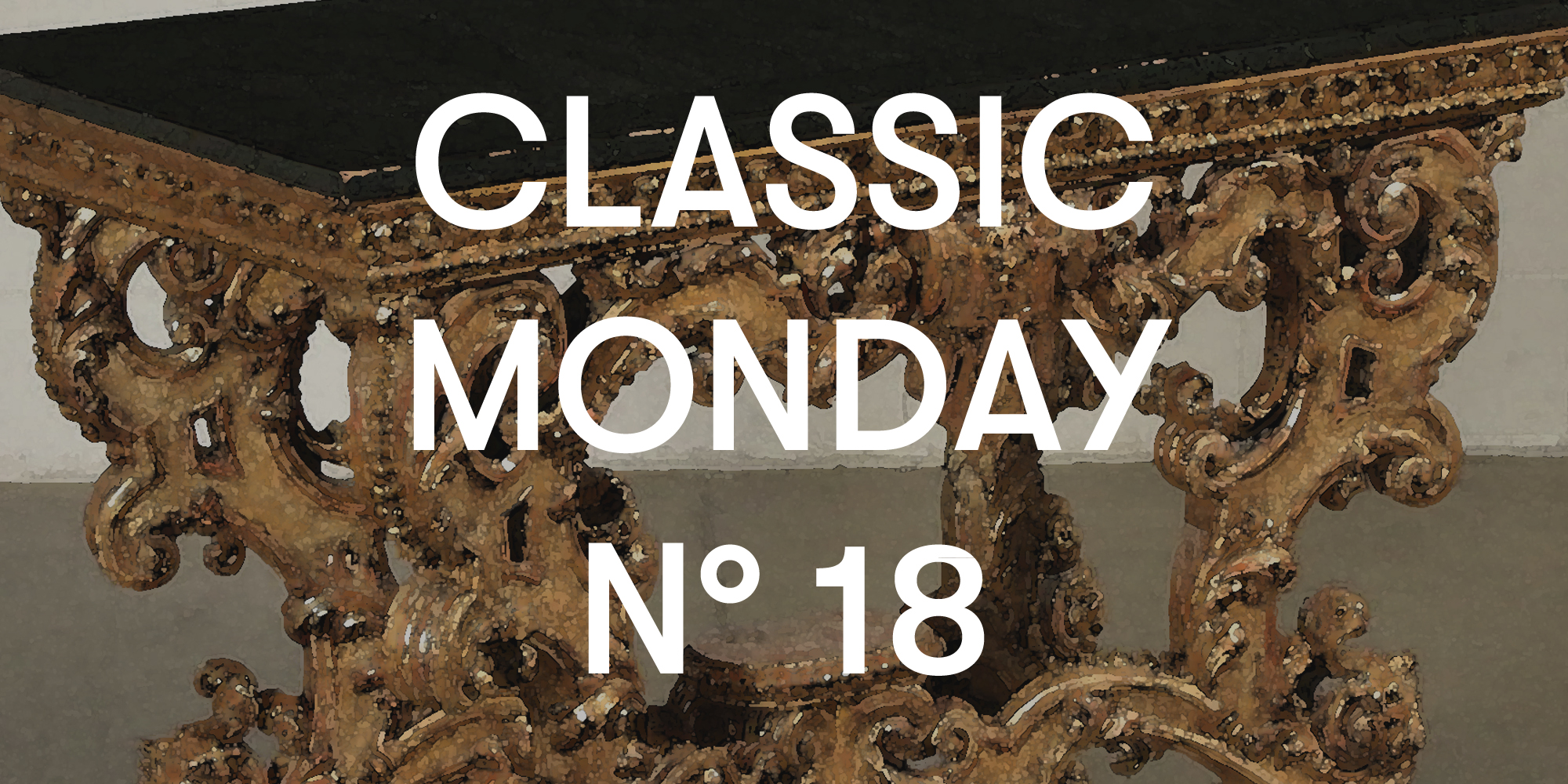
Il protagonista del nostro Classic Monday è una superba consolle di produzione austriaca. Databile agli inizi del XVIII secolo, il tavolo parietale è espressione del gusto barocco, ancora ben radicato nel paese d’oltralpe in questi anni.
Characterized by dynamism and an ostentatious richness in decoration, the Baroque had its epicenter in Rome. It spread rapidly throughout Europe, albeit in different ways, influenced by the different cultures of the various regions. The translation that was made in Austria is characterized by a less monumental version of the forms, both in the measurements and in the choices of carving motifs.
In our cabinet great attention is given to the realization of decorative elements, from foliaceous ones to grotesque masks.

While recalling the typically Central Italian tradition, it is characterized by a final yield that shows some differences. In fact, comparing the console with those of Roman production, we note a different mode of execution, recognizable above all in the volutes that support the plane, well defined through the relief of the edge. Even the skilful burin decoration of the non-carved bottoms, triaged in the preparation plaster, is typical of the furnishings produced in this geographical area.
In addition, the structure of the table is symmetrically defined, clearly a derivation from the tradition of more Nordic taste. This more sweetened reworking of the Baroque was imported into the same Italian territories culturally orbiting around this cultural typology. In particular, similar furnishings are therefore found in the Veneto area of Trentino, where the carving and the use of burin engraving the background surfaces is very similar.
A central support shelf connects the cross to the base, consisting of lively volutes and decorated with acanthus leaves. The uprights of our console are arranged in X with respect to the plane and consist of two large opposing Cs. They too are enriched with a refined carving that reproduces foliaceous elements.
Particularly interesting, just above the four curly feet, are the masks.
This iconography was in fact widely spread in the Italian peninsula since the sixteenth century, both in painting and sculpture. It is not difficult to find them in the great cycles of frescoes of historic Lombard buildings, both as an ornament and as an element that has a certain apotropaic value.
In our case the foliaceous component connotes it as a face that emerges directly from the surrounding volutes. It seems that it merges with nature itself, almost representing an auspicious sylvan spirit.
Considerable is also the band on the front under the top, decorated with a frame carved with successive leaves and supported by two volutes that connect in a large front lambrecchino. To increase the richness of the console, a usual practice in Baroque furniture, the entire surface has been gilded. The faux marble top was replaced at a different time.
Our console is presented to all intents and purposes as an important piece of furniture, expression of the most fashionable taste in Austria at the beginning of the ‘700.
Comparable models, with a similar structure and similar carving methods, are in fact present in various palaces and museums. One of the possible comparisons is in fact the one with a superb console, dated 1720, preserved at the Belvedere in Vienna.













